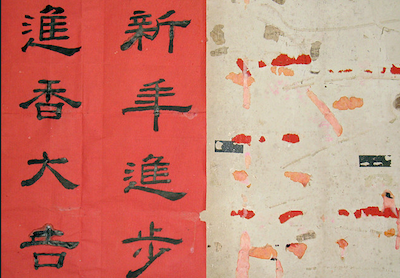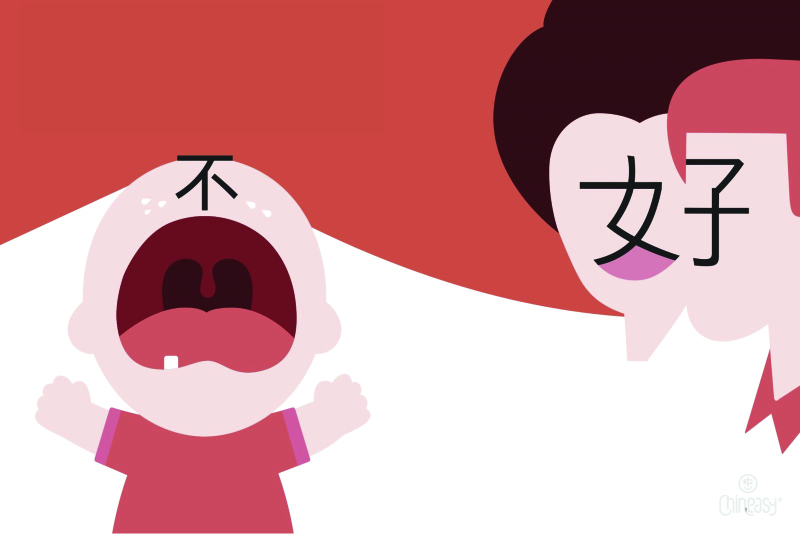This guest blog post comes from Sandra Larson, a blog writer at Elizabethan Authors and editor at Essay Writing by EssayOnTime. Thanks to her initiative, she hosted a Chinese colleague and author of articles. Through the pictures and books, she learned about the creation of ancient Chinese characters and how they look today. She spent time traveling in China, she learned some hard truths about cultural and historical aspects that influence the language.
Did you know that the literal meaning of the Chinese greeting nĭ hăo is ‘you good’? This 你 character means you and 好 means good, forming together Nihao or Hello! So, if you decided you want to get a tattoo, that actually means luck, you have to be confident you know the real meaning of the random Chinese characters tattooed. Now, you got most of the basics down.
Chinese is a beautiful language, however, it is rarely chosen for a study as the characters are some of the most complicated combinations of strokes. According to recent data, this language is spoken by about 1.3 billion people worldwide. They mainly live in China, Singapore, Taiwan, the Philippines and other countries where you can find local communities. This language is rightfully considered the oldest among the existing dialects. Let’s check other facts about Chinese language that may surprise you.
Top Chinese Language Facts
Chinese people are not vegan in general. They do not even have a word for it in their language. You must mix four or five words to explain it. As well, there is also the cultural self-colonialism of labeling every language in China as a dialect of Mandarin even though they are not mutually intelligible. Therefore, the Chinese language is very nuanced and steeped in thousands of years of history and culture which is why there is the context in which it’s used, not mentioning the current usage influence.
Fact #1. Learning this language helps acquire new skills
For the Chinese language, you have to adopt a completely new learning method. Yes, it’s hard at the beginning, but it becomes easier with time. But this is not the main point: the most fantastic fact is that you can transpose the method to acquire other skills like piano, other languages.
Fact #2. It is the oldest and most interesting language
Today, Chinese is one of the oldest languages in the world, containing many secrets and legends. Chinese writing is commonly believed to have appeared about 4,000 years ago in the form of Oracle Bone Scripts. The developed pictograms later became the basis for the hieroglyphs. However, the evidence excavated from the Liangzhu Culture site indicates there was a written language used in China at least 1,000 years earlier.
Fact #3. It separated into a group of dialects
We call this language Chinese, but many linguists separate this group of dialects into a separate branch. At present, about 10 dialects are distinguished, which differ mainly in vocabulary and phonetics. The differences are so significant that many Chinese people do not understand each other. Most speak at least Mandarin and their Chinese dialect mother tongue.
Fact #4. The written language is fundamentally different from other languages
The language consists not of letters, but of hieroglyphs. Each character is intended to mean a single syllable, sound or a whole word. Also, writing is different and it does not go from left to right, but from top to bottom and from right to left. However, in recent years, the Chinese have preferred to use traditional European writing. The classic arrangement can only be found in publications with cultural value – art books. Moreover, there is no alphabet and nouns do not have a singular or plural distinction.
Fact #5. There are about 80 thousand different characters
However, most of the characters are no longer in use. For daily communication, it is enough to learn between 1,000 – 1,200 characters. For a comfortable understanding, 2400 characters are enough.
Fact #6. Chinese is the tonal language
It has four main tones: high, ascending, falling then ascending, and descending. A tone can completely change the meaning of a word. The main difficulty in learning this language is to pronounce the tones correctly. You can make a big mistake, just choosing the wrong tone. A good example, some of the phrases can change the meaning drastically from ‘I want to ask you’ to ‘I want to kiss you’ just because you pronounced it with a wrong tone.
In Conclusion
At the beginning of learning the Chinese language, students practice saying syllables in different tones. It is very difficult for foreigners to correctly learn how to express tonality. However, you will really like the language itself, it’s genuinely beautiful and the characters have a deep history. Since Chinese has been a fast-growing language in recent years, famous people are increasingly choosing it for study. For example, Mark Zuckerberg speaks Chinese at a good level or Prince William wished the New Year in Chinese in his interview. Learning all about Chinese culture and language could be really hard. But, if the next language you are learning is Chinese, prepare for so many exciting new things there!





